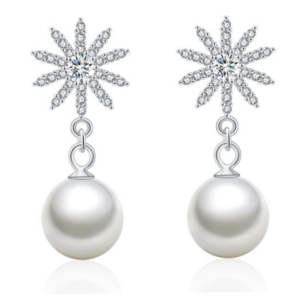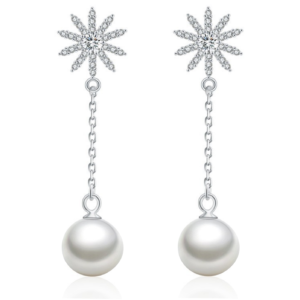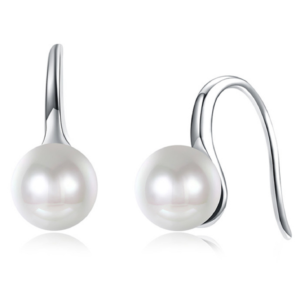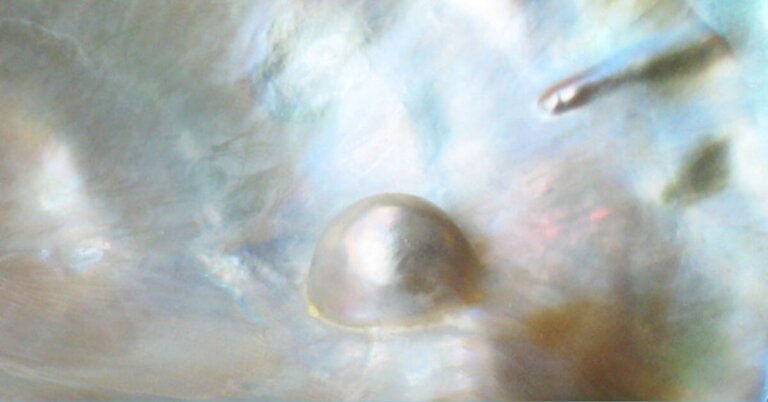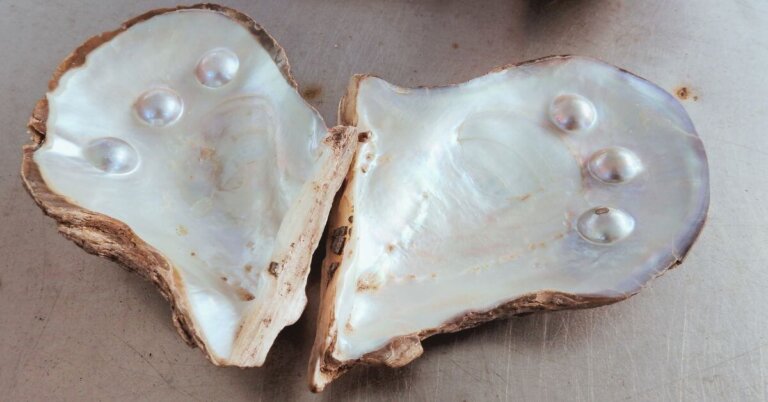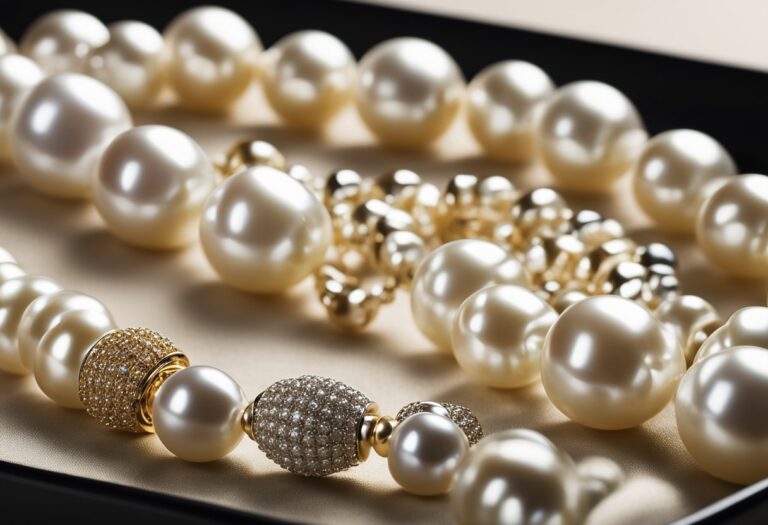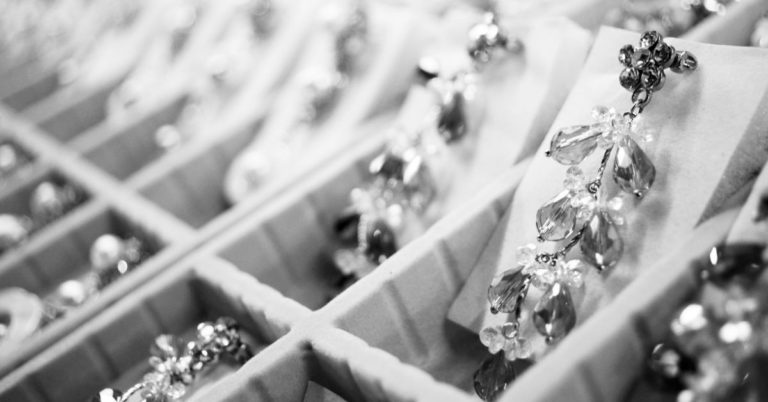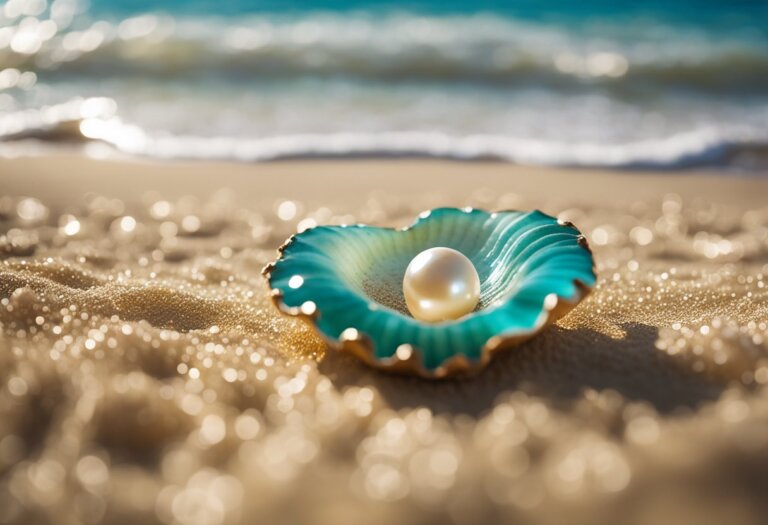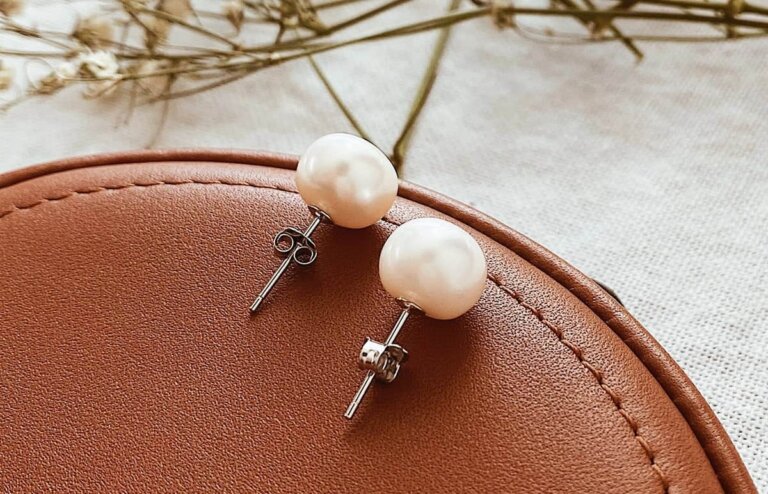Freshwater Pearls: Ultimate Buyer’s Guide to Elegance and Value
Freshwater pearls are a type of pearl that comes from freshwater mussels. Unlike their saltwater cousins that originate from oysters, freshwater pearls can be found in lakes and rivers, particularly in China, which has become a major force in freshwater pearl culturing.
Known for their array of shapes, sizes, and colors, these pearls offer versatility and affordability, making them popular in jewelry design.
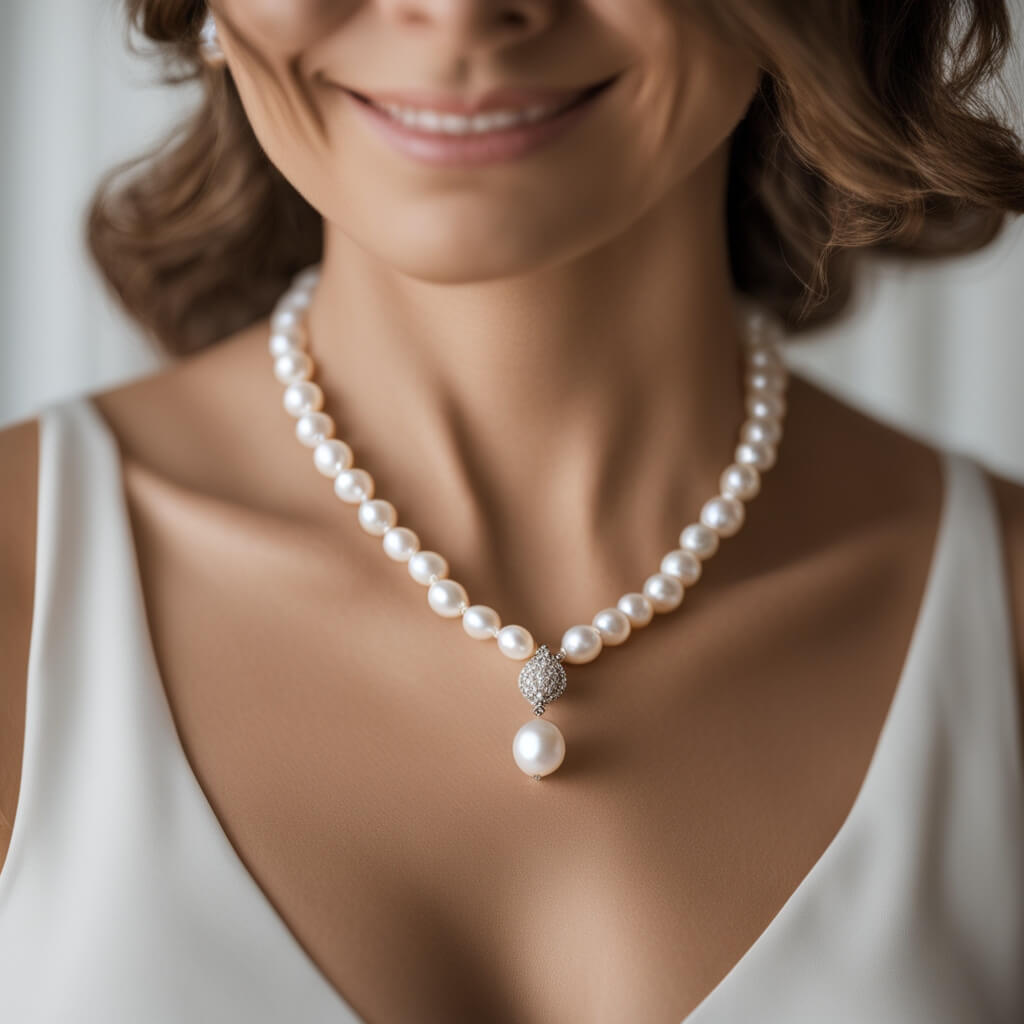
The process of creating cultured freshwater pearls involves inserting a piece of donor mussel tissue into a host mussel, which then forms a pearl sac around it, eventually yielding a pearl.
Unlike saltwater pearls that typically produce one pearl per oyster, freshwater mussels can produce multiple pearls at once, influencing their accessibility in the market.
Your understanding of freshwater pearls’ value is enhanced by recognizing the nuances that affect their quality.
- Luster: The luster of a pearl, or how it reflects light, is a critical indicator of its quality.
- Surface texture: Virtually clean and smooth
- Shape: Perfect roundness of the pearl will lead to higher value.
- Color: Pure white, yellow, pink, purple or even black.
Pearls with high luster appear more radiant and are generally more sought after. When assessing freshwater pearls, remember that each possesses unique characteristics, enhancing both their appeal and the individuality of the jewelry they adorn.
What are Fresh Water Pearls?
Freshwater pearls are gems formed by mollusks in aquatic environments like lakes and rivers. Predominantly sourced from China’s abundant pearl farms, these pearls can be cultivated en masse, with a single freshwater mussel yielding up to 50 pearls. Unlike their saltwater counterparts which generally produce far fewer pearls—typically between two to five.
Cultivation Techniques
With the help of science, pearls are no longer left to the whims of nature. They are cultured in controlled conditions, where technicians gently introduce tissue into mussels to start the pearl-growing process. This means the entirety of a freshwater pearl is composed of layers of nacre, the iridescent substance that gives pearls their luster, without a nacreous nucleus.
Pearl Characteristics
| Characteristic | Detail |
|---|---|
| Mollusk Varieties | Commonly include Hyriopsis cumingi and Hyriopsis schlegeli. |
| Shapes | While perfectly round pearls are rare, you will find them in nearly round, button, semi-baroque, and baroque shapes. |
| Colors | Range from white and cream to pastel shades like lavender, with high-quality pearls featuring overtones of pink, green, or blue. |
| Sizes | Typically, their sizes vary between 2.0 mm and 15.0 mm. |
| Luster | Vital quality aspect, though generally softer than saltwater pearls. |
Economic and cultural factors greatly influence the value of these pearls. Freshwater pearls offer an affordable alternative to other types, without compromise on beauty. They come in an array of colors. White, cream, and mauve shades are naturally occurring, while black ones are often dyed, with natural black found in Tahitian pearls.
Always remember, in freshwater pearl culture, the length of time a pearl is allowed to grow impacts its size. Moreover, although pearls with perfect roundness are rare, they are highly sought after, yet the alluring charm of non-spherical pearls is gaining appreciation for their unique beauty.
Pearl Farming and Harvesting
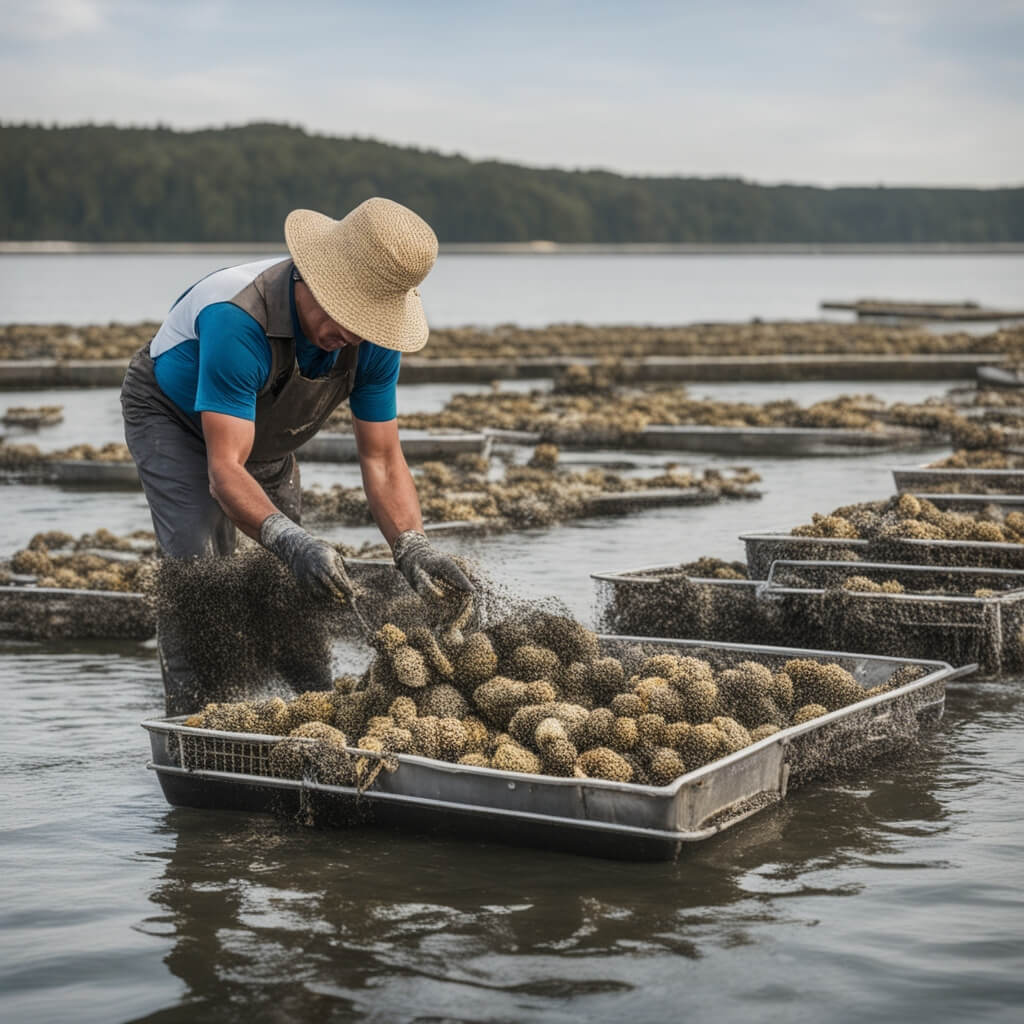
In this section, you’ll learn about the specific locations where freshwater pearls are cultivated, the types of mollusks used in pearl production, and the essential steps of nucleation and cultivation involved in pearl farming.
Geographic Origins
Freshwater pearls are primarily cultivated in regions with abundant freshwater sources such as rivers and lakes. Countries renowned for their freshwater pearl farming include:
- China: The largest producer of freshwater pearls, providing a substantial variety of pearls to the global market.
- United States: Known historically for pearls from the Mississippi River, but now more for cultured varieties from Tennessee.
Hyriopsis Cumingii and Other Mollusks
The most commonly used species for freshwater pearl cultivation is the Hyriopsis cumingii, also known as the triangle shell mussel. Here are some specific traits and species used in pearl farming:
- Multiple Pearl Production: Unlike saltwater oysters, a single freshwater mussel can produce up to 50 pearls per cycle.
- Other Species: Some farms also use mussels like the Hyriopsis schlegelii and locally available species depending on the region.
Nucleation and Cultivation
The process of nucleation involves the insertion of foreign tissues into a mussel, inducing the formation of a pearl. Here is the typical timeline and steps involved:
- Initial Process:
- Surgical Insertion: The foreign tissue is inserted through a careful surgical procedure.
- Irritation: The mussel reacts by coating the tissue with nacre, eventually forming a pearl.
- Post-Nucleation Care:
- Monitoring: Mussels are monitored and cared for, to ensure a high survival rate post-nucleation.
- Optimal Conditions: Farmers create optimal conditions in ponds or lakes for the mussels to thrive.
| Stage | Duration | Details |
|---|---|---|
| Nurturing | Months to Years | Ensures pearls develop to desirable size and quality. |
| Harvesting | Seasonal | Involves the careful extraction and processing of pearls. |
Cultivation ends with the careful harvest and assessment of pearls for their luster, color, shape, and size. Your understanding of the origins, mollusks involved, and the detailed process of nucleation and cultivation enriches your knowledge of freshwater pearls.
Freshwater Pearl Characteristics

Freshwater pearls exhibit a range of characteristics that are crucial to their beauty and value, including color variations, a spectrum of shapes and sizes, and unique aspects of surface quality and luster.
Color Variations
Your freshwater pearl can come in an array of colors, influenced by the type of mollusk and environment in which it’s cultivated. Common colors include white, pink, peach, lavender, and even black. The variance in color is due to natural and artificial factors that alter the nacre’s hue.
Shapes and Sizes
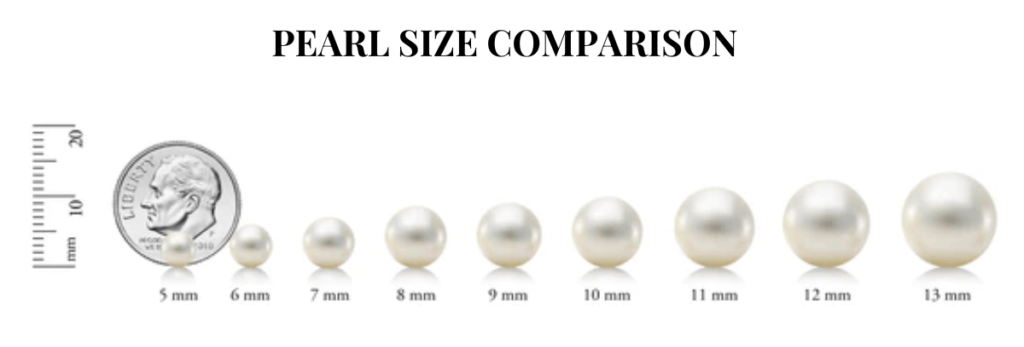
Freshwater pearls offer a remarkable diversity in shape and size. Sizes can vary widely, typically ranging from 2mm to 10mm. Their shapes can be classified into several main categories:
- Round: Perfectly spherical, highly valued.
- Oval: Elongated, symmetrical shape.
- Button: Slightly flattened round shape.
- Baroque: Non-symmetrical, unique shapes.
| Shape | Description |
|---|---|
| Round | Perfect spheres, traditional and highly coveted. |
| Oval | Symmetrical, elongated, often used in strands. |
| Button | Flattened or slightly dome-shaped, resembling a button. |
| Baroque | Irregular, unique shapes, each with a character of its own. |
Surface Quality and Luster
The surface quality of a freshwater pearl is a vital indicator of its value. You want to look for pearls with a smooth surface and minimal blemishes. The luster, or shimmer, is caused by light reflecting off the layers of nacre—the substance that makes up the pearl. The thicker the nacre, the deeper and more pronounced the luster.
Pearl Grading and Value

When considering the purchase of freshwater pearls, understanding the grading system and factors that influence their value is crucial to making an informed decision.
Grading Systems
Freshwater pearls are graded on a scale similar to that of their saltwater counterparts (A-AAA Grading System) with A-AAAA Grading System.
A, AA, AAA, and AAAA being the most common grades.
The highest grade, AAAA, indicates that the pearls are nearly flawless, well-rounded, and have excellent luster. AAA pearls have slight surface irregularities and high luster, while AA graded pearls may have minor blemishes and good luster. The A grade is often assigned to lower quality pearls with reduced luster and more noticeable surface defects.
| Pearl Grading A-AAAA | Luster | Nacre Thickness | Surface Quality | Shape | Color & Overtone | Matching |
|---|---|---|---|---|---|---|
| AAAA | Excellent | Thick | Very Slightly Blemished | Perfect Round | White/Pink with Rose, Silver Gray Overtone | Excellent |
| AAA | Very High | Medium to Thick | Slightly Blemished | Near Round | White/ Cream/ Pink with Rose, Gray, Green Overtone | Very Good |
| AA | High | Medium | Slightly Blemished | Slightly Off Round | White/ Cream/ Pink with Rose, Gray, Green Overtone | Good |
| A | Medium | Thin | Noticeable Blemishes | Off Round | White/ Cream/ Pink with Rose, Gray, Green Overtone | Fair |
Factors Affecting Value
The value of freshwater pearls is impacted by several factors.
- Quality plays a significant role; higher graded pearls (AAA, AAA) are typically more valuable, having finer luster and fewer surface blemishes.
- The durability of a pearl is tied to the thickness of its nacre; pearls with solid nacre are more durable and therefore more valuable.
- Round pearls command higher prices due to their rarity and appeal, but size and color can also affect worth.
Prices rise with the pearl’s size and unique, naturally occurring colors.
Remember, well-maintained pearls can retain their beauty and value for a lifetime.
Jewelry and Styling

When incorporating freshwater pearls into your wardrobe, the right piece of jewelry can elevate any outfit, whether it’s casual or formal. Your choice of pearls can express your personal style and bring a timeless elegance to your ensemble.
Types of Pearl Jewelry
Necklaces:
- Simple Strand: The classic pearl necklace is a staple in any collection.
- Layered: Multiple strands for a modern take on a traditional look.
Earrings:
- Studs: For everyday elegance that focuses on the luster of a single pearl.
- Dangles: Add a dynamic element with pearls that sway with movement.
Bracelets:
- Bangles: A sleek approach to wearing pearls on your wrist.
- Charms: Fun and personal, charm bracelets with pearl accents showcase your love for whimsical styles.
Rings:
- Solitaire Pearl: A single pearl set on a ring provides a clean, focused look.
- Clustered Pearls: A conglomeration of pearls for a statement piece.
Styling for Different Occasions
Casual Events:
- Single Pearl Pendant: Ideal for daily wear, conveys simplicity and sophistication.
- Pearl Studs: A touch of elegance that complements any casual attire.
| Occasion | Recommended Style |
|---|---|
| At Workspace or Daily Wear | Subtle studs or a simple single pearl pendent |
| Company Events and Special Occasions | Pearl studs or a pearl strand |
| Lunch with Friends | Charm bracelets or layered necklaces |
Formal Events:
- Matching Set: Necklace, earrings, and bracelets for cohesive elegance.
- Statement Pieces: Choose pieces with larger pearls or intricate designs for a grand effect.
| Occasion | Recommended Style |
|---|---|
| Weddings | Timeless strands or designer pieces |
| Gala Dinners | Bold rings or ornate dangles |
No matter the event, pearl jewelry adds a touch of class and sophistication to your outfit, demonstrating your finesse in styling for the occasion.
Care and Maintenance

When you own freshwater pearls, proper care and maintenance are crucial to preserving their luster and extending their longevity. Unlike other gemstones, pearls are organic and can be damaged by harsh chemicals, including those found in cosmetics, perfumes, and hair products. To ensure the enduring shine of your pearls, consider the following guidelines:
| Do | Don’t |
|---|---|
| Wipe with a soft cloth | Expose to harsh chemicals |
| Store separately | Wear while applying cosmetics or perfume |
| Put on after applying makeup | Store with other jewelry |
- Handling: Always handle pearls gently and with clean hands, as oils or sweat can affect their surface.
- Cleaning: Clean your pearls with a damp cloth, mild soap, and water. It’s important to avoid submerging them in water, as this can weaken the string over time.
- Storage: Store your pearls in a separate pouch or jewelry box to prevent scratches from harder gemstones. It’s beneficial to keep them in a fabric-lined compartment.
- String Maintenance: If you have a pearl necklace, it’s advisable to have it restrung periodically to prevent strand breakage.
Remember, pearls thrive on being worn, as the natural oils from your skin help maintain their moisture. With careful attention to these points, your freshwater pearls should remain durable and stunning for years to come.
Here’s some fresh water pearl jewelry you may want to explore:
Read Also:
- How to Choose The Best Earrings for Your Face Shape (with Pictures and Celebrities)
- Earrings Styles: Popular Types of Earrings with Pictures
- Freshwater Pearl vs Cultured Pearl: Unraveling the Mysteries
- Cultured Pearls: Real and Elegant Gem At Affordable Price
- Freshwater Pearl vs Saltwater Pearl: Know The Difference

